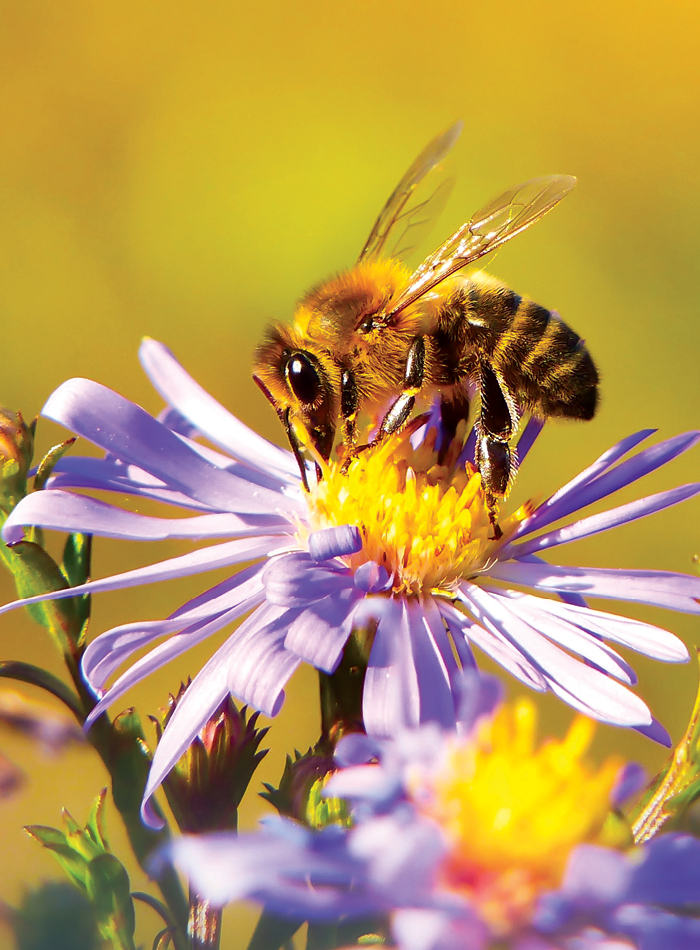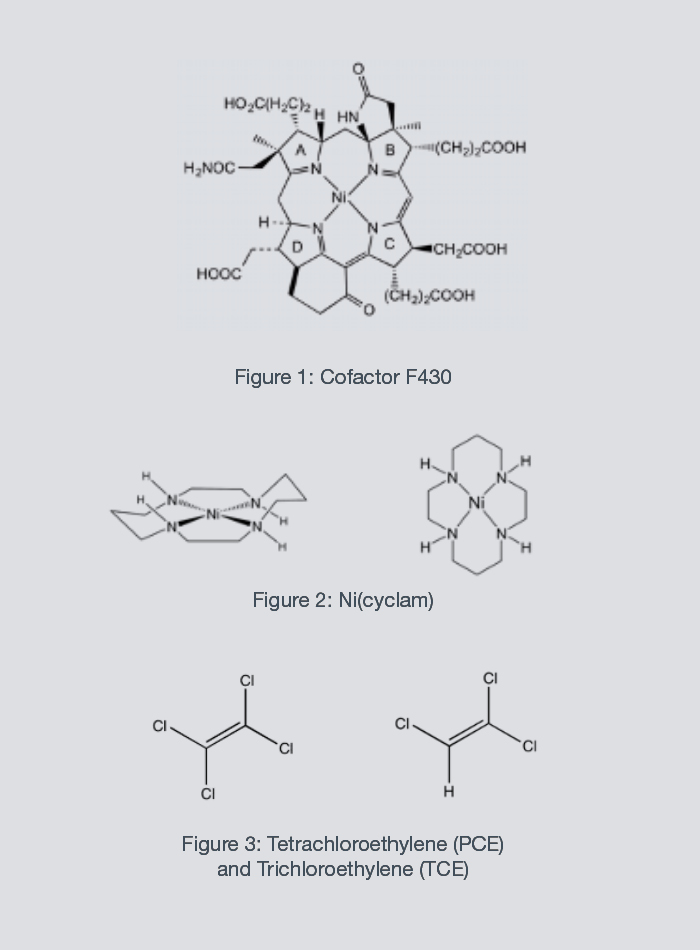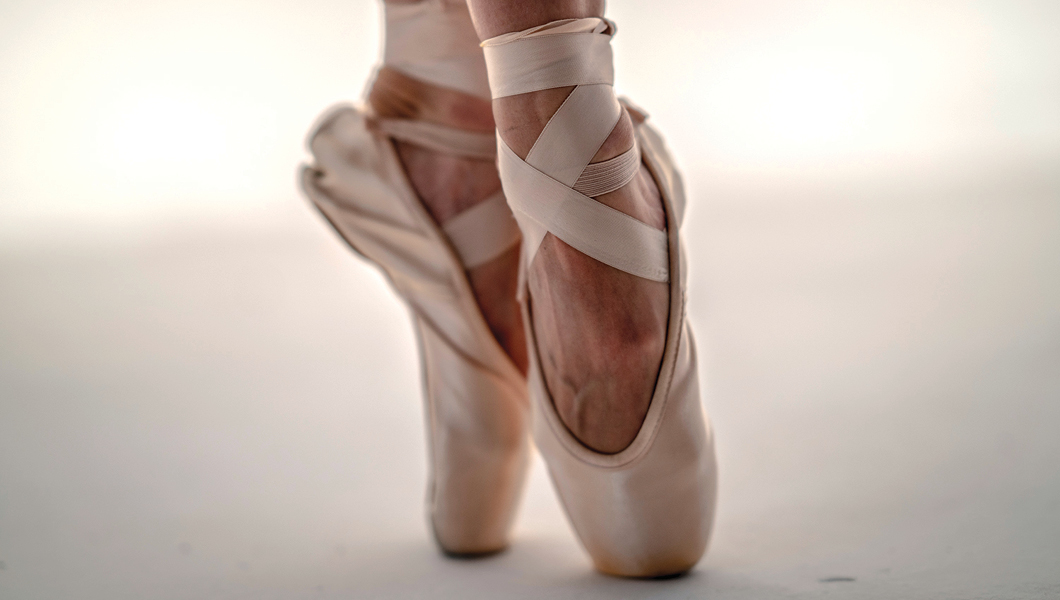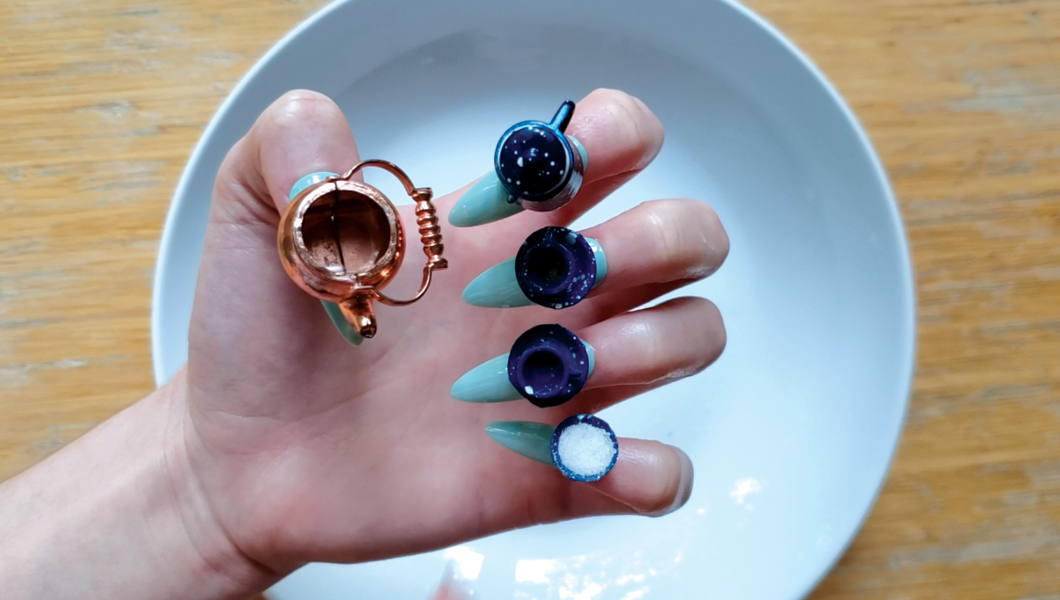Research
Selected Capstone Projects
Projects culminating during the 2019–2020 academic year include individual research done by graduating seniors and design projects completed by first-year students. Here we’ve selected senior projects that demonstrate some of the many academic achievements. More projects at A Celebration of Student Achievement.
1. HUMANITIES, SOCIAL SCIENCES, AND THE ARTS
“The Pour”
Advisor: Ken Fandell, professor of art, Michael G. and C. Jane Wilson Chair in Arts and the Humanities
Student: Risa Purow-Ruderman ’22
Made of metal miniatures glued to a set of press-on nails, this tea set merges practical objects with the decorative nail art to produce a nominally functional yet completely impractical art piece. The piece, created in Art 179 – The Expanded Studio, plays with readymade objects and the physical humor arising from the comically small volumes of liquid that nonetheless must be kept upright. The nails are wearable but cannot be tipped without spilling their contents. The teapot holds a small amount of tea that can pour from the spout (though not without uncomfortably contorting one’s hand), the pitcher holds a few drops of cream and the bowl holds sugar that can be spooned into the teacups, each holding a single drop of tea.
2. BIOLOGY
 Mapping Floral Resources for Bees Using Drone Imagery
Mapping Floral Resources for Bees Using Drone Imagery
Advisor: Matina Donaldson-Matasci, assistant professor of biology
Student: Arya Massarat ’20
Poor nutrition among modern-day honey bee colonies is contributing to their decline. Yet understanding how the diversity and abundance of flowering species around a colony affects its health remains difficult because of the manual labor required to analyze these large foraging landscapes. Massarat describes a procedure for automatically mapping the species of flowering plants around a colony from overlapping drone images. He developed a pipeline for stitching the images together, identifying plants within them and classifying each plant by its species. The resulting map of the flowering species surrounding a colony could be used in future experiments that aim to assess how a colony’s health and foraging behavior is influenced by the spatial distribution of the floral species in its vicinity.
3. CHEMISTRY
 Dechlorination of Carcinogenic Pollutants Using Nickel Cyclam
Dechlorination of Carcinogenic Pollutants Using Nickel Cyclam
Advisor: Katherine Van Heuvelen, associate professor of chemistry
Student: Brandon C. Wada ’20
Tetrachloroethylene (PCE) and Trichloroethylene (TCE) are common industrial pollutants. They are excellent organic solvents; however, they are recognized as carcinogens. This research focuses on converting these compounds into ethylene by mimicking reductive dehalogenation nickel chemistry found in nature. Chemists simulate the environment of the nickel center of cofactor F430 through the model compound Ni(cyclam) (cyclam = 1,4,8,11-tetraazacyclotetradecane). Reduction of Ni(cyclam) using NaBH4 in ethanol produces the nickel borohydride species Ni(cyclam)(BH4)2, which is capable of reducing PCE and TCE2. By investigating the kinetics of the reduction reaction, researchers are measuring the activation energy of the reaction in order to better understand the reaction mechanism.
4. ENGINEERING
 Analysis of the Life Span of a Pointe Shoe as Related to Pressure
Analysis of the Life Span of a Pointe Shoe as Related to Pressure
Advisor: Kevin Williamson, assistant professor of dance and dance department chair, Scripps College
Student: Taylor Sloop ’20
Pointe shoes are the most important tool for a ballet dancer, but they break down quickly because they are made of burlap and glue. The goal of this project is to determine a standard for a “dead,” or broken-down, pointe shoe so that more effective methods for improving the lifespan of the pointe shoe can be explored. This project focuses on using pressure sensors to quantitatively describe a dead pointe shoe. Based on data gathered, a consistent pressure difference was found between new and dead shoes in many different ballet poses; therefore, pressure sensors could be an effective way to identify shoes that have broken down too much to dance in.
5. MATHEMATICS
 Social Justice and Post-Secondary Mathematics Education
Social Justice and Post-Secondary Mathematics Education
Advisor: Dagan Karp, associate professor of mathematics
Student: Lily E. Friedberg ’20
Friedberg reviewed and synthesized foundational literature of critical theory, critical education theory and critical math education and reflected on pedagogical practices that are informed by these theories. She proposed a classroom module that implements some of these practices in a 50-minute undergraduate lecture and measured its effectiveness in teaching linear algebra content and improving student attitudes toward the intersections of mathematics and social justice.
6. PHYSICS
 Developing a Radio Frequency Plasma Reactor for Use at Undergraduate Institutions
Developing a Radio Frequency Plasma Reactor for Use at Undergraduate Institutions
Advisor: Tom Donnelly, professor of physics and chair of the faculty
Student: Rachel L. Barcklay ’20
Plasma, or ionized gas, is one of the four fundamental states of matter. Many naturally occurring plasmas, such as lightning, Earth’s ionosphere and solar winds, are necessary to life on Earth. In the last century, artificially created plasmas have also become integral to modern technologies: They are required for semiconductor device fabrication, developments in nuclear fusion power, and materials synthesis. Barcklay investigated the use of plasmas for gas phase materials synthesis. While many current methods of gas phase materials synthesis require expensive and potentially hazardous equipment, this work develops a radio frequency plasma reactor which is relatively inexpensive and suitable for use at undergraduate institutions.
